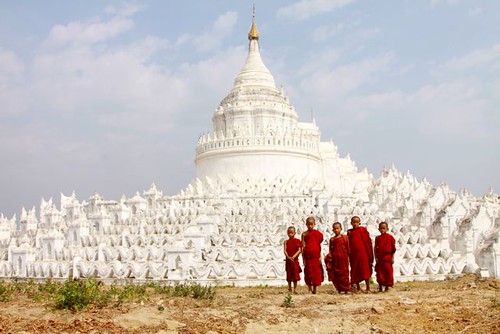
(Young monks at the Hsinbyume Pagoda, Mingun)
After ten glorious days, Myanmar has rapidly become my favorite country in South East Asia! The people are so warm and friendly, the scenery is spectacular, the food is unbelievably delicious, and the place has a low-key vibe that is incredibly inviting!
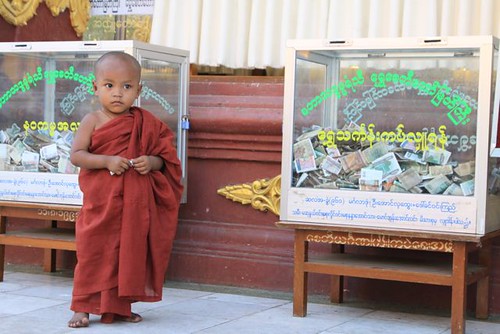
(Three-year old monk at Shwedagon Pagoda)
Immediately upon our arrival in Yangon (formerly Rangoon), I was keenly aware of the traffic – so quiet and orderly. Suddenly it dawned on me – where were all the motorbikes?
The government has banned scooters within city limits and has made it illegal to honk the horn! I marveled over this bit of information. As inconvenient as the law must be for locals, I reveled in the serenity of the traffic – a far cry from the chaotic street scenes of Hanoi.

(Little Girl at Shwedagon Pagoda – the unusual makeup worn by both males and females is known as Tha-Nat-Kha powder produced from an aromatic tree bark. It is believed to condition the skin and to protect it from sunburn.)
Myanmar itself is fascinating, with its culture heavily influenced by its neighbors (China on the North-East, Laos on the East, Thailand on the South-East, Bangladesh on the West, and India on the North West) along with Theravada Buddhism. In fact, almost 90% of the population embraces Buddhism, making Myanmar one of the most peaceful, tranquil and safest places in Asia.
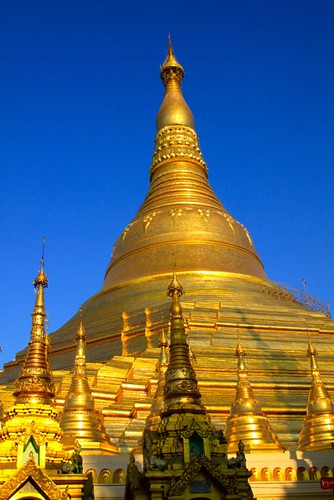
(Golden Stupa of Shwedagon Pagoda)
But the highlight of Yangon is the awe-inspiring Shwedagon Paya, the most sacred of all Buddhist sites. In Rudyard Kipling’s book, Letters from the East, he wrote:
“To visit Myanmar is to embrace Buddhism. The religion entrenches so deeply into the country’s culture, tradition, mindset that everything I saw, I heard, even the air I breathed, had an unequivocally Buddhist touch. In Yangon, thousands of prayers fill the colossal, Shewdagon Paya days and nights. This splendid golden wonder of architecture that once deeply impressed foreign travelers like Somerset Maugham, is not only the pilgrimage centre for all Myanmar people, but also where the soul of the entire country rests upon.” His words resonated as I walked around this two-and-a-half thousand-year old stupa, 90 meters tall and gilded with gold leaf. And this was just the first day of our journey!
(A series of photos: Woman Smoking Cigars)
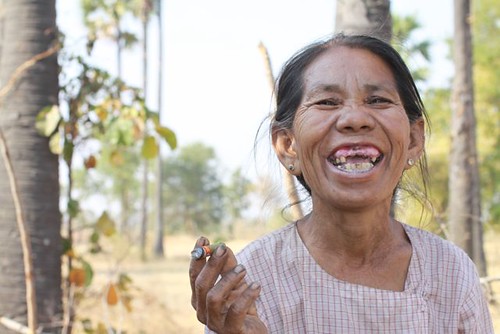
(Taken along the road to Mandalay)
The next stop on our itinerary – the Bagan Archaeological Zone! This 26-square mile area contains over 4000 temples from the 11th and 13th centuries, when Bagan was the capital of Myanmar.
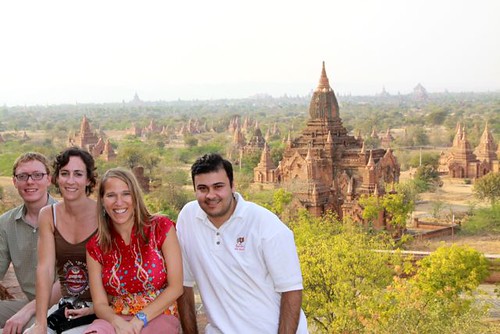
(My travel companions – John, Sarah and Xerxes)

(The impressive sights of Bagan)
We spent our days exploring various temples, one architectural masterpiece after another, admiring unique Buddha images, intricate mural paintings, and the many craft markets along the way.
In retrospect, all of the pagodas are beginning to blur together in my mind, yet Bagan remains one of the highlights of this trip. The impressive countryside, with one rural village after another, combined with the rich history of the region filled me with such wonder!
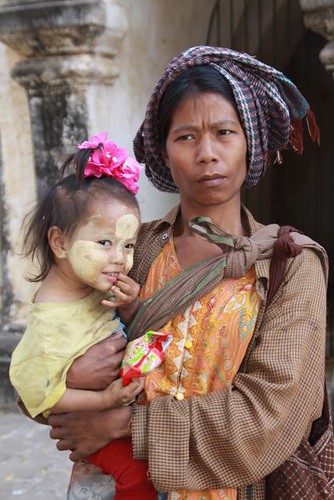
(Outside one of the pagodas in Bagan)
From Bagan, we drove to the legendary city of Mandalay, whose name alone conjures images of pristine settings. As I admired the scenery out the car window, It seemed appropriate to listen to Robbie Williams’ song, The Road to Mandalay (which is a catchy tune)! I was literally off in my own little dream world as I absorbed the stunning beauty all around. I couldn’t help but smile as we passed old vehicles piled high with baskets and people as well as the many ox-bow carts paving the roads.
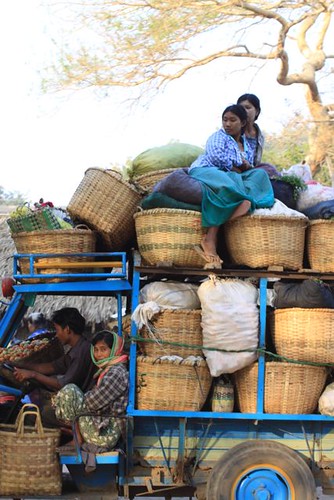
(Delivering goods to the market)
Granted, the lack of infrastructure is an indication of the true poverty of this country. For instance, the distance between Bagan and Mandalay is 180 miles – yet it took almost 9 hours to drive! Not to mention, most of the vehicles on the road are circa 1960 and stripped down to the bare minimum of movable parts.

(Stopped along the way to see how palm sap is collected and turned into palm sugar)
Myanmar, which has been under military rule in one form or another since 1962, has remained somewhat closed off from the rest of the world. The US has imposed sanctions against Myanmar since 1997. And in 2007, the US announced stricter sanctions against Myanmar, noting:

(The shores of the Irawaddy River)
“Americans are outraged by the situation in Burma, where a military junta has imposed a 19-year reign of fear. Basic freedoms of speech, assembly and worship are severely restricted. Ethnic minorities are persecuted. Forced child labor, human trafficking and rape are common. The regime is holding more than 1,000 political prisoners, including Aung San Suu Kyi, whose party was elected overwhelmingly by the Burmese people in 1990.”Mrs. Aung San Suu Kyi, a 1991 Nobel laureate, has been under house arrest for most of the past two decades. She remains a powerful symbol for the pro-democracy movement in her nation” (Washington Post, 2007).

(Playing in front of the drums)
Furthermore, numerous organizations (i.e., Amnesty International and Human Rights Watch) have documented egregious human rights abuses by the military government; and the government has restricted Internet access, blocking Google, Gmail, Yahoo, Hotmail, etc. and most political opposition and pro-democracy pages in order to limit information citizens can access on-line.
Yet, despite the political neurosis of the government, I had an interesting conversation with a Burmese woman who said that she actually respected and admired their government. After all, “she sleeps soundly at night, knowing that she’s safe (there’s virtually no crime in-country).” Granted, I’m not sure if safety is attributed to the government as much as it is to religion.
Mandalay boasts the largest population of monks, with 600,000 living within the village-like area of downtown. As such, we ventured through old teak monasteries and pagodas, one after another, and even stumbled upon a monastery filled with monks studying for exams.
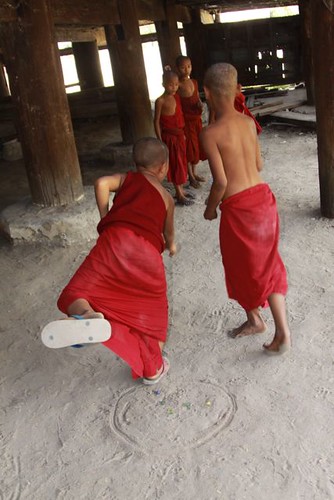
(Monks playing marbles underneath the teak monastery)
But for me, the highlight was walking along the shores of the Irrawaddy River!
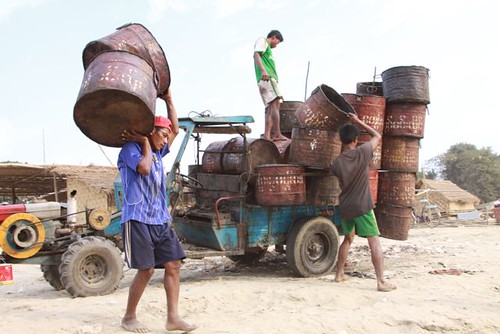
(Working along Irrawaddy River)
The next day, we hopped on board a boat and worked our way to Mingun in order to see the beautiful white Hsinbyume Pagoda and the Mingun Pahtodawqyi, an enormous brick structure that was left unfinished after an astrologer predicted the King would die should the temple be completed.
Series of Fishermen along Inle Lake:

(Amazing balancing act – as they row with one leg)
We then journeyed to Amarapura to see the famous U Bein Bridge – a 200-year old bridge constructed entirely from teak that spans over 2kms in length.
Our final stop was Inle Lake, one of Myanmar’s top attractions. The only way to see the lake is via motorized long-boats. Stilt-house villages and floating gardens are dotted around the lake, with glimpses of leg-rowing fisherman scattered about.
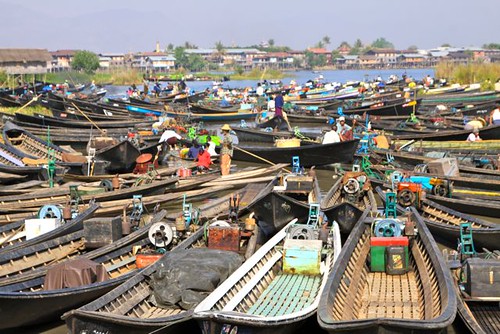
(Boat parking for the market @ Inle Lake)
Another sight to see was the lake’s morning market, which is visited by lake inhabitants and surrounding hill tribes who come to sell and trade their wares. A sea of boats were parked along the shores, as villagers from near and far congregated to buy fish, flowers, food and other necessities.
One of the surrounding hill tribes are the Paduang, or Long Neck Hill Tribe, originally from Burma (Kayah state) on the Thai border south of Inle Lake. Traditionally, the rings were intended to make Paduang women less attractive to raiding parties from neighboring tribes. The application of heavy brass neck-rings causes deformation of the collar bone and upper ribs, pushing the shoulders away from the head.
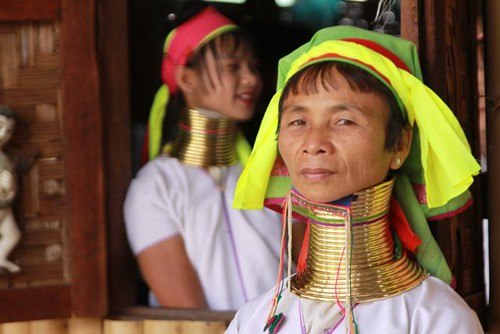
(The Paduang People – or Long-Neck Hill Tribe of Burma)
Today, the traditions are continued in order to provide women from impoverished hill villages with the means to make a living posing for photos. Many souvenir shops on Inle Lake employ Paduang women to lure customers. Granted, instead of posing for photos, they are now running their own craft shop.
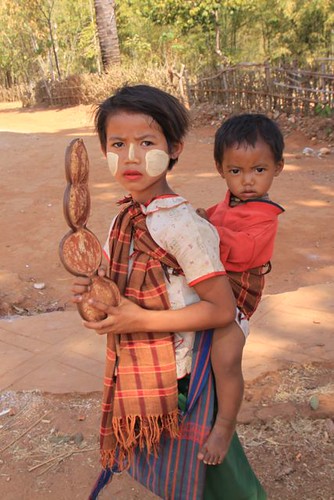
(Taken at one of the villages at Inle Lake)
Ethically, I was torn while taking their photo. I felt as if I was condoning this culturally induced freak show, yet I felt good about purchasing their crafts. I remember going through this same internal struggle when I first saw the Paduang people in Thailand (Burmese Refugee Camp) so many years ago. At the time, the refugee camp felt like a zoo, with hoards of tourists traveling from afar just to get a glimpse of the ‘giraffe people’. Back then, the women appeared quite sad – as if they were on display for foreigners to snap their image. At least now they’re able to maintain their dignity as they manage their own shop and sell their hand-made textiles.
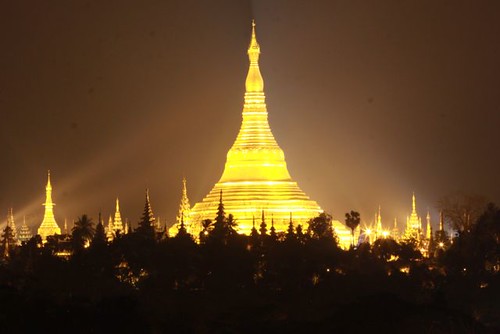
(A view of Shwedagon Pagoda taken from the rooftop of my hotel)
Due to the Tet Holiday, all of the return flights to Hanoi were fully booked, requiring two extra days/nights of leave (who am I to argue) 🙂 As a result, I felt privileged to walk around the streets of Yangon another day…and to relive my old backpacking days in Bangkok along Khao San Road. Unfortunately, I wasn’t nearly as impressed with Thailand this time around…Bangkok was too touristy for me 17 years ago – so you can only imagine what it’s like by today’s standards!
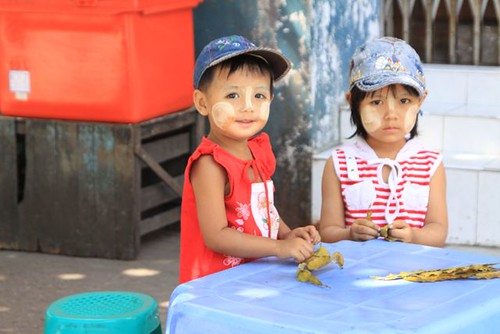
(Brother and sister in Yangon)
By and large, this entire trip was magnificent! It opened my eyes to a whole other world and brought to light the plight of the Burmese people, their struggles as well as their successes.
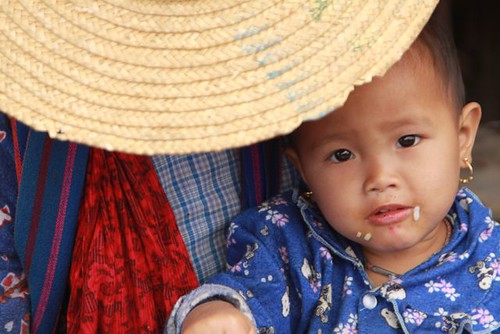
(Breakfast at the market at Inle Lake)
I feel quite fortunate to live in South East Asia! This region is so different from Africa…there’s so much to learn and to experience! I’m already plotting next year’s Tet holiday! I’m thinking about returning to Myanmar and doing some serious trekking to the Northern Hill Tribes. I’ve also been scoping out birding possibilities for my mom and Steve…this could be a birder’s paradise!
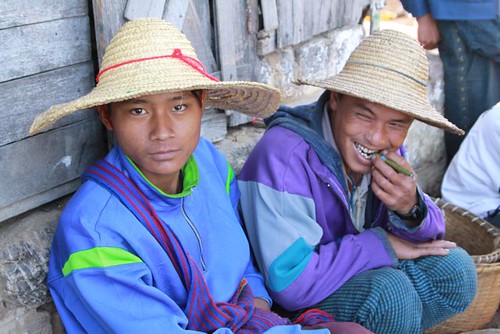
(Fishermen selling their catch at the market)
Sending much love to all,
Amy


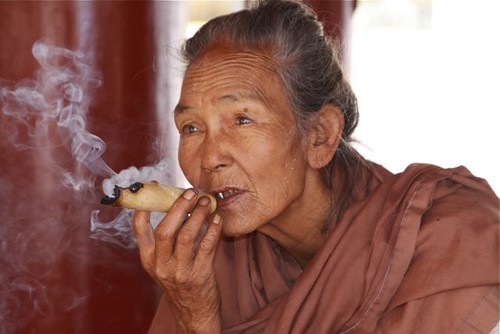
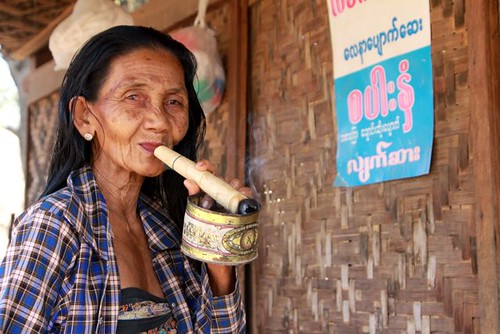

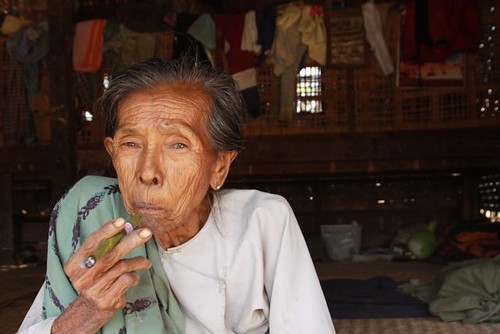
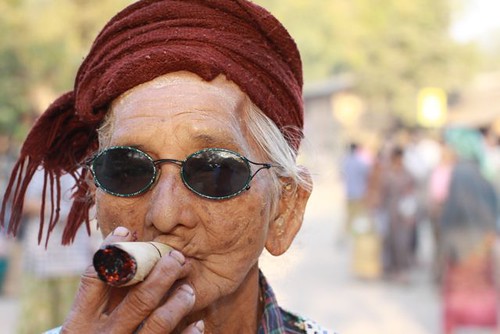
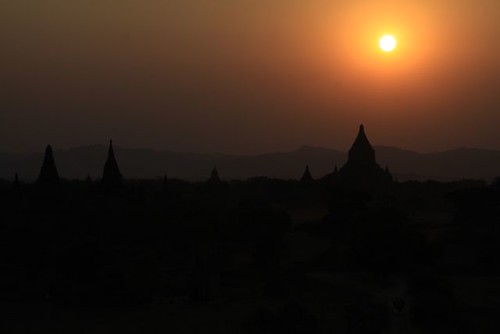
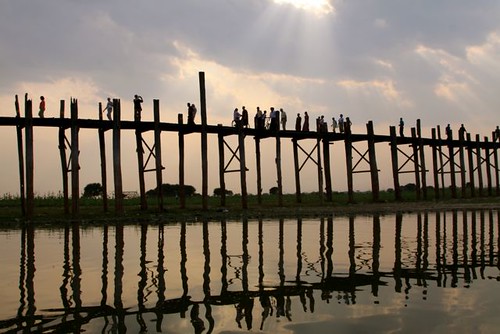
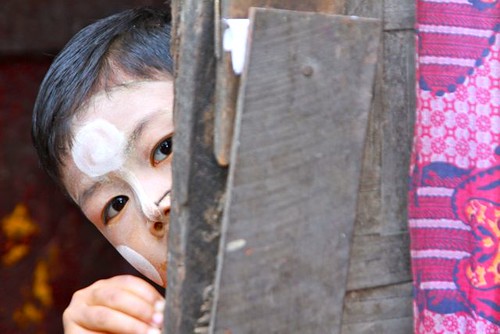
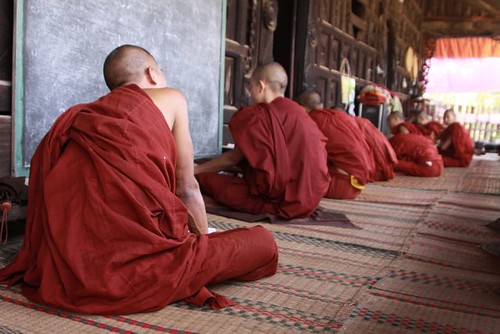
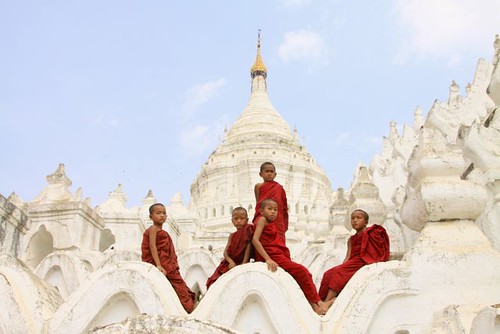

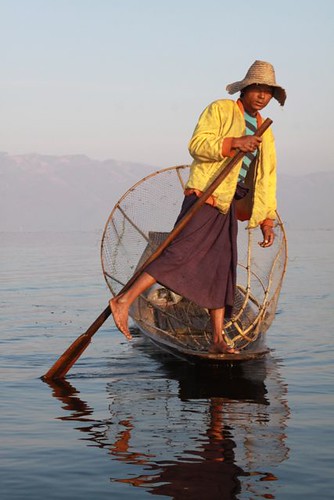
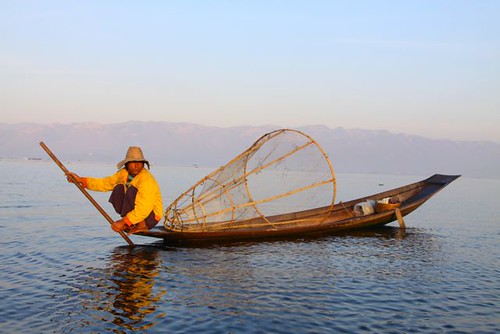

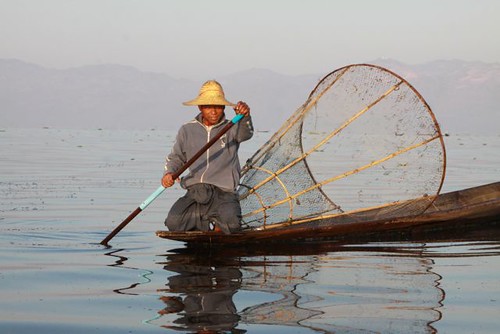
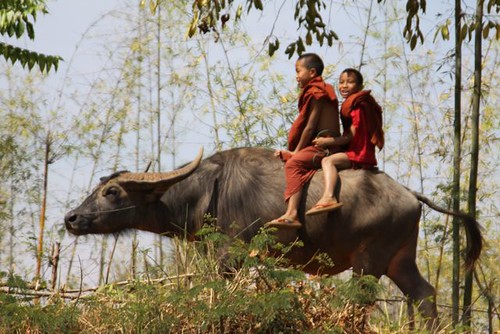

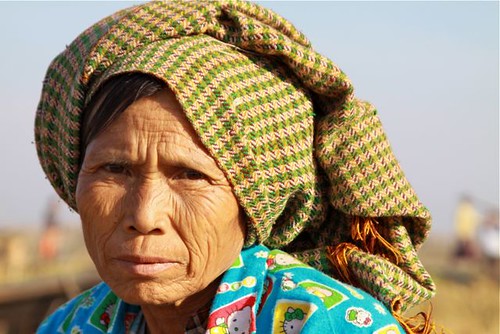

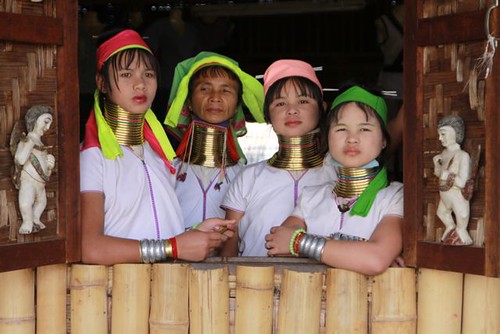
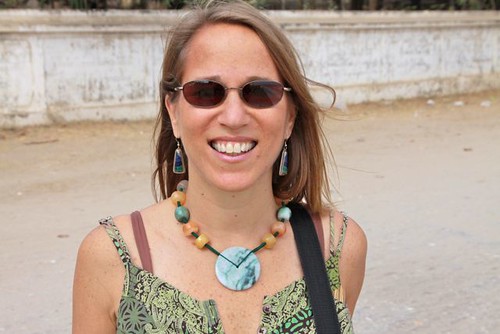
Amy, wonderful wonderful photos. I want to go to Burma. Continue your safe travels and stay healthy!!
Love
Serra-Lesa, Alex, Jaime, Ivy and Lily
Amy, these are amazing! You are totally my photography inspiration…
I so enjoy your photography and stories of your travel. I noticed the series of old women smoking. Impressive serires.
Dear Amy, I love all the pictures you shared, amazing people, amazing scenery, and amazing story telling. Now I have to save to go to Burma too. Also, I love the tops you are wearing, where did you get them from 😉
What a great treat to see a place I have never seen much of. The pictures were wonderful!
Marilyn
Fantastic post- and photos! Loving the cigar sequence.
Wow!! you really have painted a priceless picture of the brighter side of Myanmar. How I wish i had the means to visit the Gold temple and the amazing 4000 temples.. I just love the history. Thanks for the photos.